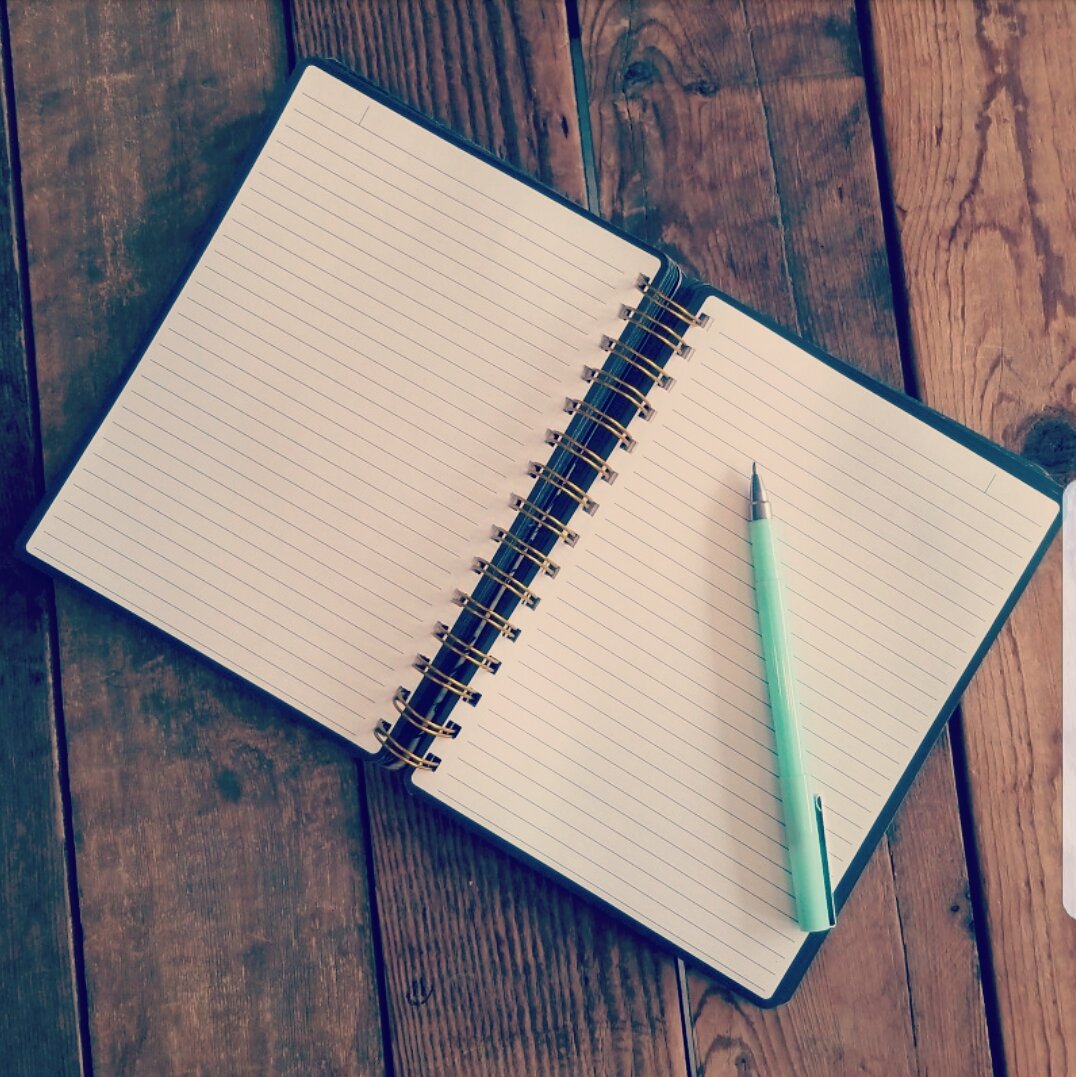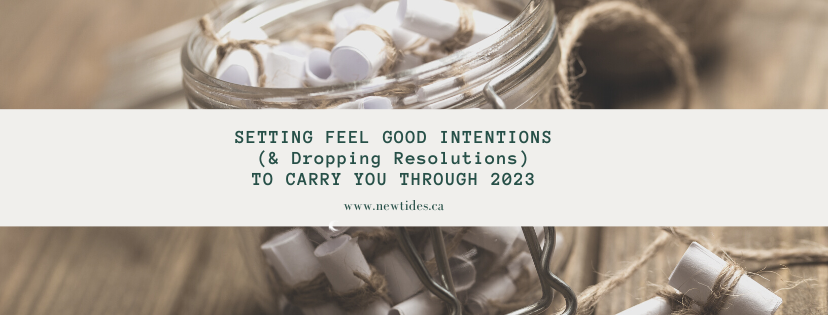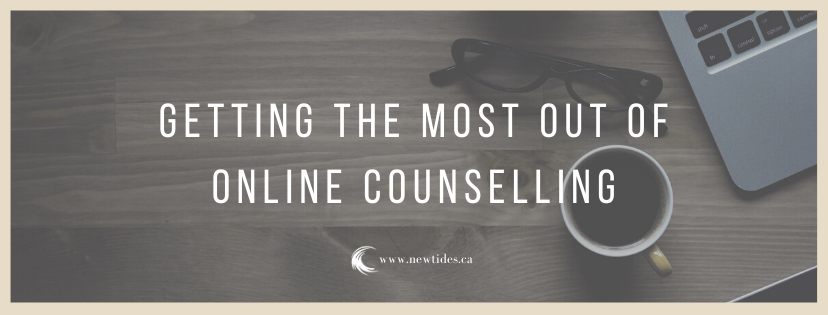
COUNSELLING AND THERAPY BLOG
To Go or Not to Go: The Dilemma of Social Anxiety
If anxiety makes it difficult to make and stick to plans, it's pretty likely that you've thought, "Should I go out if I'm feeling social anxiety, or should I just stay home?" The answer isn't so simple, but if you experience anxiety and still feel worried about FOMO (fear of missing out) as well, there is a way to make those tough decisions when anxiety makes you want to hide away at home.
If you experience social anxiety, it’s likely that at SOME point in the not so recent past, you’ve thought or spoken the following words, truly confused about what choice would feel better at the end of the day…
“Should I go? Or should I just stay home?”
The last few months, I have had a LOT of conversations about the experience of social anxiety: with my clients, with friends and family, and most recently as I spoken to people navigating hesitations and fears about joining a workshop I run that involves sharing with others in a larger group.
I get it – I’ve been there. After a long wait, the circle full of faces all turn towards you, listening. You’ve been diligently rehearsing the ‘right’ thing to share during the last six peoples’ monologues – somehow you failed to pay attention to what anyone else just said while also somehow simultaneously judging yourself for not coming up with what the guy two people to the left just shared. A few words pour out of your mouth, sounding not quite like you planned. Like clockwork, home in bed later that night, you have an epiphany about what you really should have said in that moment.
Sound familiar?
I teach yoga, I’m a counsellor, I run workshops, I’ve both facilitated and participated in a few very challenging groups and I still find myself less than enthused and comfortable when I have to share with a group of people, especially if its personal.
Of course it’s so undeniably awkward and contrived… in a society where it’s still challenging to really feel like we can trust our closest friends and relationships with how we feel, we often hide our worries and our insecurities even with the people who know us best. While we have grown a lot as a society, as a counsellor, I know this is still true because of the sheer number of times a client has said to me, “No one else knows this about me, but…” Why on earth would we find digging deep to share our internal world with a group of strangers who we have NO idea what they could possibly be thinking of us a breeze, much less a delight?! Being truly at ease with this idea requires remarkable sturdiness and self-assuredness, and even then it’s not an experience many of us love, at least not the first few times.
(Have I convinced you that participating in one of our groups is a good idea yet?)
And yet… something in this process works for many people. I still return to situations where I share my heart and sometimes very vulnerable feelings in these oddly uncomfortable situations. I hear friends rave about the workshop they went to that was focused on just that – sharing with strangers. I watch people walk out of classes and workshops looking lighter, more connected and way less anxious than when they came in.
So what gives? And when do we know when to risk showing up to a potentially anxious situation, and when do we bow out, protecting ourselves from the potential horror or shame of being seen in a way that might not feel good?
It’s not a straightforward answer, but read on for a few pointers that might provide a little extra clarity.
-
I want to pause for a moment, and state what might already be obvious: I’m using groups or workshops as an example, but the same concept and questions apply to other situations where social anxiety might rear its ugly head… parties, public speaking, networking events, meeting your partner’s close friends or family, family reunions, events combining multiple friend groups, performing… the list is endless.
-
I’ve recently become an owner to an adorable but sometimes fearful puppy, so lately my explanations have used sweet little animal brains and behaviour as an example – I hate to break it to you, but underneath our fancy ability to use language and our incredibly intelligent minds, when it comes to the basics of fear, our brains aren’t so different!
Picture this. Over time a sweet little puppy who loved to play with other dogs slowly learned that not all dogs are as playful, cuddly and confident as we might. A few surprise dog fights or barking rallies later, your dog (who body and nervous system has an AMAZING capacity to remember and react to things that are scary – just like us) starts to bark, run away from, or cower at other many of the dogs you meet when they are out and about in the world.
This little dog is learning to be more and more sensitive to potential danger. This totally makes sense – puppies just wants to stay safe! It now knows that not all dogs are potential playmates, and the more challenging interactions occur with other dogs, the more sensitive, and fearful the dog will become (basically building more evidence that the fear is necessary). If you are training this dog, you could a) avoid ALL contact with other dogs , b) continue as if nothing were wrong or c) start to maximize positive interactions with other dogs, and minimize things escalating to a level where your dog has any good reason to be afraid!
Plot spoiler - the best option for your dog to become self assured around other dogs again is option C. Option A doesn’t give our little puppy ANY options to feel safe around other dogs in the long term, while option B will only enforce more fear, as once anxiety around a certain situation (other dogs) begins, every challenging interaction adds a bit more fear on top.
Just like our cute little example puppy, somewhere along the line, most of us have learned that some interactions leave us feeling afraid, cowering, emotionally spent, or even defensive and over time, for many of us, this fear has grown. Over time, knowing how to respond when the desire to skip out situations that make you feel anxious becomes more complicated, as it can be hard to know what might end up making you feel best at the end of the day.
The trick to walking out of a room or group situation feeling confident and more at ease (instead of feeling crappy about ourselves and less likely to return) is in picking situations where the risk is low, and success is likely, especially in the beginning, or if your anxiety is quite high. Just like dog training with option C above, a conversation for a different place, this is easier said than done, but here are some ideas to get you started if this is a new idea for you.
For our furry friend, low risk and high success might look like only playing with predictable dogs we know and love. For us this might look like choosing to share vulnerable feelings or fears only with others we know can trust, or only with those who are most likely to respond in a way that might feel good to us, so that a sense of safety can be rediscovered.
Then slowly as things start to go well, its likely we begin to feel a little bit more comfortable being more ourselves around a few close others. We can the start to experiment with reaching outside of our known bubble. For a puppy this might mean having a few moments of sniffing unknown dogs who look realllly friendly from afar, whose owners also have confirmed they will probably be up for a gentle meet and greet, then we move on without lingering TOO long. Its not a full on play session, but just a momentary hello where not too much can go wrong.
It’s the same idea for us – as we start to work with our anxiety and expanding trust in ourselves (and others) more, we can start in to become curious about bringing bravery to more lower risk situations without getting in TOO deep.
What does this look like?
Lower Risk:
Engaging in new situations that might cause you anxiety/social anxiety on days when you feel at least like YOUR version or normal – ie. Considering not going somewhere that’s highly anxiety provoking if you are just getting over the flu, just broke up with your partner, already had more than normal anxiety level day etc. UNLESS you know it will likely go very very well (high success chance)
Knowing what feels personal and vulnerable for you, and only sharing what you feel comfortable sharing. For example, with your close friends you might feel a tolerable level of nervousness sharing a situation that caused you to feel an 8/10 level of hurt, distress or anxiety, in a new group of people, you might only share a 3/10 and let this grow over time. This doesn’t mean hiding who you are necessarily, but just being aware and intentional about the parts of your personality, life and inner world you feel most at home with, and the pieces that feel more challenging and vulnerable to let others see.
Some of us also might accidentally overshare when we are nervous or feeling vulnerable! You can also start to be aware of moments where you might want to share more than you’re actually comfortable with overall because it feels expected of you, or because you’re nervous and not thinking clearly. Being aware of these moments and course correcting might be helpful in avoiding a ‘vulnerability hangover’ later on.
Of course we can also have vulnerability hangovers regardless, but the focus here is actually on those of us who experience the challenge of somehow having less boundaries or share less authentically when we feel anxious or share only because we think we “should”.
Higher Chance of Success:
Bringing a friend or a ‘buffer’
Go places or with people that someone you trust vouched for
Going for only an hour, or a short amount of time if you know your anxiety peaks after a certain amount of time
Similarly, if you know it takes you an hour or so to ‘land’ or settle into a new situation, you can commit to going for at least that amount of time if all goes as it typically does
Knowing a certain community has similar values as yourself etc.
Giving yourself permission to leave, or share less of yourself if its not going quite as you hoped (and maybe even planning ahead for what that looks like)
Building stability over time
While scary, the reality is that being able to predict what every new dog will do (and how your puppy will react as well!) just isn’t likely to happen. Therefore, in time, the goal is to have enough positive interactions that not only will your dog learn to trust other dogs but maybe maybe maybe one day your dog feels safe and calm enough that when another dog has a challenging moment, your once fearful little pup, can let out a little whine and then just keep on walking.
Of course, feeling solid and safe in ourselves doesn’t happen over night – it takes time, and mishaps, and feeling judged or out oof place are bound to occur every once in awhile.
For those moments, here are some questions that might help to reground and reduce your anxiety.
What do I need to feel safe and secure in who I am right now just for 10 or 20 seconds?
2. If I was comforting a friend, or even a small child who was worrying about the same thing , what might I let them know (you’re loved , it’s okay to be imperfect, we are all human, we simply can’t be confident all the time)
3. Can I take a moment to be kind and understanding with the worry I am feeling rather than trying to fix it or make sure I … [didn’t say anything stupid, wasn’t judged etc.]
This is where some time with a counsellor or even with a close friend might be helpful. In my ideal world, we could all face moments of rejection or judgment or simply not being someone’s cup of tea without making it mean that we aren’t good enough, a bad person, unlikable or not who we should be. This piece of the puzzle is an ongoing process for many of us, so above all, please be patient and kind with yourself as you build more faith and trust in who you are.
As you start to gain momentum and are taking more small risks – even something like walking weird down the street somewhere you aren’t likely to run into anyone can count!
Asking the following question can be helpful in assessing what situations might be okay to step it up a little and share something a little more personal.
“If this doesn’t go as I hope, will I still be okay?”
If the answer is yes – trudge on ahead, brave one!
PS. Okay doesn’t mean that it doesn’t feel crappy , but the knowledge that if it does feel challenging, it will likely be an amount of challenge, embarrassment, or fear that you know you can handle, and that won’t last forever (remember the example of the puppy whining – a little furball at that stage might be distracted for a few blocks, but eventually calm back down and not remember that dog forever). The key is having more and more positive experiences, even if small. As humans we have the extra skill of practicing being able to be kind and compassionate to ourselves during this process as well!
Connection is what heals.
While we do have the power to heal ourselves, most hurts and shames are born from imperfect connections with others, which is why connection can be so vital in healing these parts of us as well.
When we walk away from an interaction feeling understood, related to, or even when a chat with someone goes better than expected, that experience can take root in our hearts, our minds, and our bodies – just like the challenging ones can. By giving ourselves these opportunities in small doses, we increase our chances for healing and feeling more at ease in the world…. one small (perhaps shy) smile at a time.
Warmly,
Morgan
Journalling to Integrate COVID Challenges and Changes
Wondering how to deal with the grief, confusion, and interruption of life caused by the last year? Take a moment over the next 10 days to journal about COVID-19 and give compassionate, expressive space to your experience.
It’s been a tough year - now a year plus - for us all. I feel it. Your neighbour feels it. It’s even likely your pet feels it (even though they are likely pretty happy you’ve been around so much). It’s likely you’ve been inundated by news stories, drained by countless COVID conversations and are SICK of many things pandemic related.
BUT - perhaps while you’ve talked circles around what’s happening, perhaps you haven’t processed the emotions related to the place you’ve found yourself in. Perhaps you’ve talked about the fear and frustration but haven’t looked at some of the positive changes that may have occurred (even if it only feels like 1%). Perhaps you’ve just felt stuck and unable to sort the effects of the past 12 plus months and just don’t know where to start.
I would like to offer you a little glimmer of assistance as you trudge along this path - in the form of a 10 day Journalling quest to help put pen to paper to document, sort and process how you’re doing right now.
Why Journalling?
It’s so easy to get stuck in our own thought process, feelings, and anxiety as they arise but not actually process our emotions, make meaning out of our experience or slooow down enough to hold compassionate space for ourselves.
Journalling can help:
Know what to actually write about! While some of us are masters at free-writing, having journalling prompts can be so helpful in giving us a place to start
Slow down and give designated time to our emotions, thoughts and experiences that we just can’t get when we are multi-tasking, scrolling or worried about where we have to be in a half hour…
Expression of our internal world, which we often suppress or don’t give voice to!
Creativity: while you’re journalling, add a creative flair if you like… write a poem, describe your experience using the five senses (touch, image, sound, taste, smell)
Meaning making: you may not have really paused to realize why you’re experiencing what you are, how it makes sense or what lessons you’ve learned that you want to remember
A good dose of nostalgia for later… while right now the last thing we probably want to do is focus on the pandemic we are in, you may one day want to look back on your experience. This will be in the history books, after all!
Download your 10 day journal to explore your personal growth, express challenges, relationships with those around you, and how to move forward









